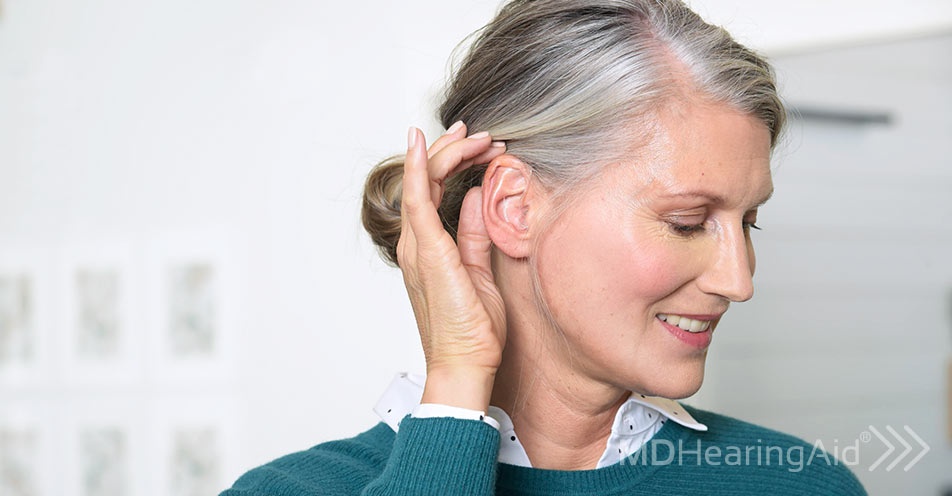Unlike eyeglasses, where everything comes into focus when you put them on, hearing is a more nuanced process. When you first start wearing hearing aids, it can take your brain time to adjust. You will be hearing many beautiful sounds that you've been missing, such as birds singing, rain falling, and children's voices.
Other sounds—like the refrigerator humming, the clock ticking, or even your own voice—may seem too loud. This is completely normal. Your brain is relearning how to prioritize these sounds. With time and practice, you will be able to focus what you want to hear effortlessly.
Finding the right fit and settings for your ears will help you during this adjustment period. Here are a few tips to help you get comfortable with your new hearing aids.
Select the Right Tip for Your Ear Canal
Like shoes, fit is everything with hearing aids. A good fit is critical not only for comfort, but also for quality sound with minimal feedback (whistling). Finding the right fit depends on what style of hearing aid you’re wearing.
Behind-the-ear (BTE) hearing aids
BTE hearing aids from MDHearing (such as the VOLT and the AIR) come assembled with an open ComfortTIP. This style of tip is ergonomically shaped like your ear canal and works for the majority of people. It allows clear, natural sound and helps prevent a plugged-up feeling.
If you're not getting enough volume, you're experiencing whistling at higher volumes, or you’re not finding an optimal fit after a few days of experimenting with this tip, please contact MDHearing’s customer support. Our licensed hearing specialists can advise you on how to get the best fit or provide you with additional sizes and shapes to better suit your needs.
If an even more precise fit is desired or required, any of our BTE hearing aid models can be fitted with a custom ear mold. These can be obtained from an online store or from a local audiologist or hearing aid dispenser.
In-the-ear (ITE) hearing aids
ITE hearing aids from MDHearing (such as the NEO and the NEO XS) come assembled with a medium-sized dome. Because ITE hearing aids sit inside your ear—and due to differences in the size and shape of ear canals—this style of hearing aid is harder to fit. If the medium domes do not work for you, experiment with the other sizes included in your hearing aid package.
If you experience any discomfort or a poor fit, don't give up. Contact our licensed hearing specialists to discuss solutions or exchange for a different product if you're within your 45-day trial. Behind-the-ear hearing aids can often be better optimized for the size and shape of your ear, providing more comfort and better sound quality.
Find a Comfortable Hearing Aid Volume
It’s important to find the right volume for your hearing. If it's too loud, the sounds around you can be overwhelming and you risk damaging your hearing more.
MDHearing's hearing aids come equipped with easy-to-use volume controls. A great way to initially set the volume is to sit down with a loved one in a small, quiet room and adjust the volume on your hearing aid until their conversational voice is at a comfortable level. Setting the volume to a quiet, one-on-one conversation creates a nice baseline. From there, you can make further adjustments as you experience what sounds right to you.
It can be tempting to crank up the volume when you miss a word in the conversation. But remember, when you turn up the volume, everything gets louder. If your brain hasn’t adjusted to the increased volume, you may find yourself having more trouble deciphering what you want to hear from the background noise.
Don’t forget that even people with normal hearing have trouble catching every word in restaurants or loud environments. Give yourself time to find a volume works best for you.
Choose the Right Programs
Your hearing aid may also come equipped with multiple program settings (the specific programs vary by hearing aid model). Our team of doctors and audiologists developed these programs by evaluating thousands of hearing tests to determine what amplification profiles would meet the needs of most people with hearing loss.
In general, there are programs for quiet environments, conversations in small groups, and noisy environments. The different programs focus on different frequencies and levels of noise reduction. Some of our devices also feature an adaptive setting that automatically adjusts based on the noise level around you.
The best way to determine which programs you should use is by reading your user manual and trying each program in different environments. You don’t necessarily need to use all the programs, so if you only like one or two, just stick with those. Don’t worry if the program descriptions in your manual do not match up with your specific hearing. What’s most important is that you find what sounds best for you in each situation.
Don’t give up on your new hearing aids.
When it comes to getting comfortable with your hearing aids, there isn't one right answer. Much like clothing, a hearing aid fits everyone differently, depending on your hearing loss and your ear size. It’s easy to get frustrated when it doesn’t sound perfect right out of the box, but it's important to be patient.
The benefits of improving your hearing are life-changing. Hearing aids can enable you to enjoy your favorite activities again, spend quality time with family and friends, regain your independence, and so much more.
Need assistance? Our licensed hearing specialists provide free one-on-one support whenever you need it.
CONTACT US

